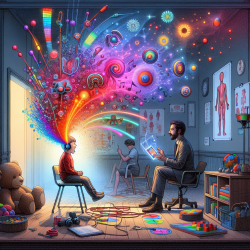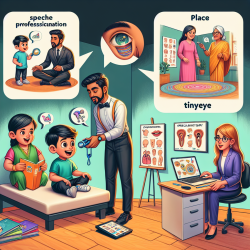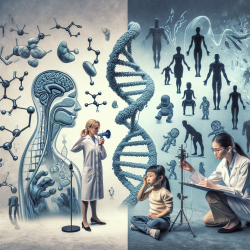Introduction
In the realm of speech-language pathology, understanding the complexities of the human brain is crucial. One fascinating phenomenon that has captured the attention of neuroscientists and educators alike is synesthesia. This condition, where stimulation of one sensory pathway leads to involuntary experiences in a second sensory pathway, offers unique insights into the workings of the human mind. The evolution of the concept of synesthesia, as detailed in the research article "The evolution of the concept of synesthesia in the nineteenth century as revealed through the history of its name," provides valuable lessons for practitioners in the field.
The Historical Context of Synesthesia
The nineteenth century was a pivotal period for the study of synesthesia. Initially referred to as "obscure feeling" in 1772, the term evolved significantly over the years, culminating in the use of "synesthesia" or "synæsthesiæ" by 1892. This evolution highlights the shifting boundaries in its definition and the growing understanding of this complex condition. The historical journey of synesthesia's nomenclature is not just a linguistic curiosity but a reflection of the broader scientific advancements of the time.
Implications for Speech-Language Pathology
For speech-language pathologists, synesthesia presents both challenges and opportunities. Understanding synesthesia can enhance therapeutic approaches, particularly for children. Here are some ways practitioners can leverage insights from synesthesia research:
- Enhanced Sensory Integration: Recognizing synesthetic tendencies in children can lead to more tailored sensory integration therapies, improving outcomes for those with atypical sensory processing.
- Innovative Communication Strategies: Synesthesia can inform the development of novel communication strategies, particularly for non-verbal children or those with autism spectrum disorders.
- Multisensory Learning: Incorporating multisensory learning techniques, inspired by synesthetic experiences, can make educational content more accessible and engaging for children with diverse learning needs.
Encouraging Further Research
The study of synesthesia is far from complete. As practitioners, staying informed about ongoing research can open new avenues for therapy and education. Encouraging collaboration between neuroscientists and speech-language pathologists can lead to breakthroughs that benefit children worldwide.
Conclusion
Understanding the evolution of synesthesia not only enriches our knowledge of human perception but also equips us with tools to enhance therapeutic practices. By integrating historical insights with modern research, speech-language pathologists can create more effective, personalized interventions for children. To delve deeper into the fascinating history of synesthesia, I encourage you to read the original research paper: The evolution of the concept of synesthesia in the nineteenth century as revealed through the history of its name.










